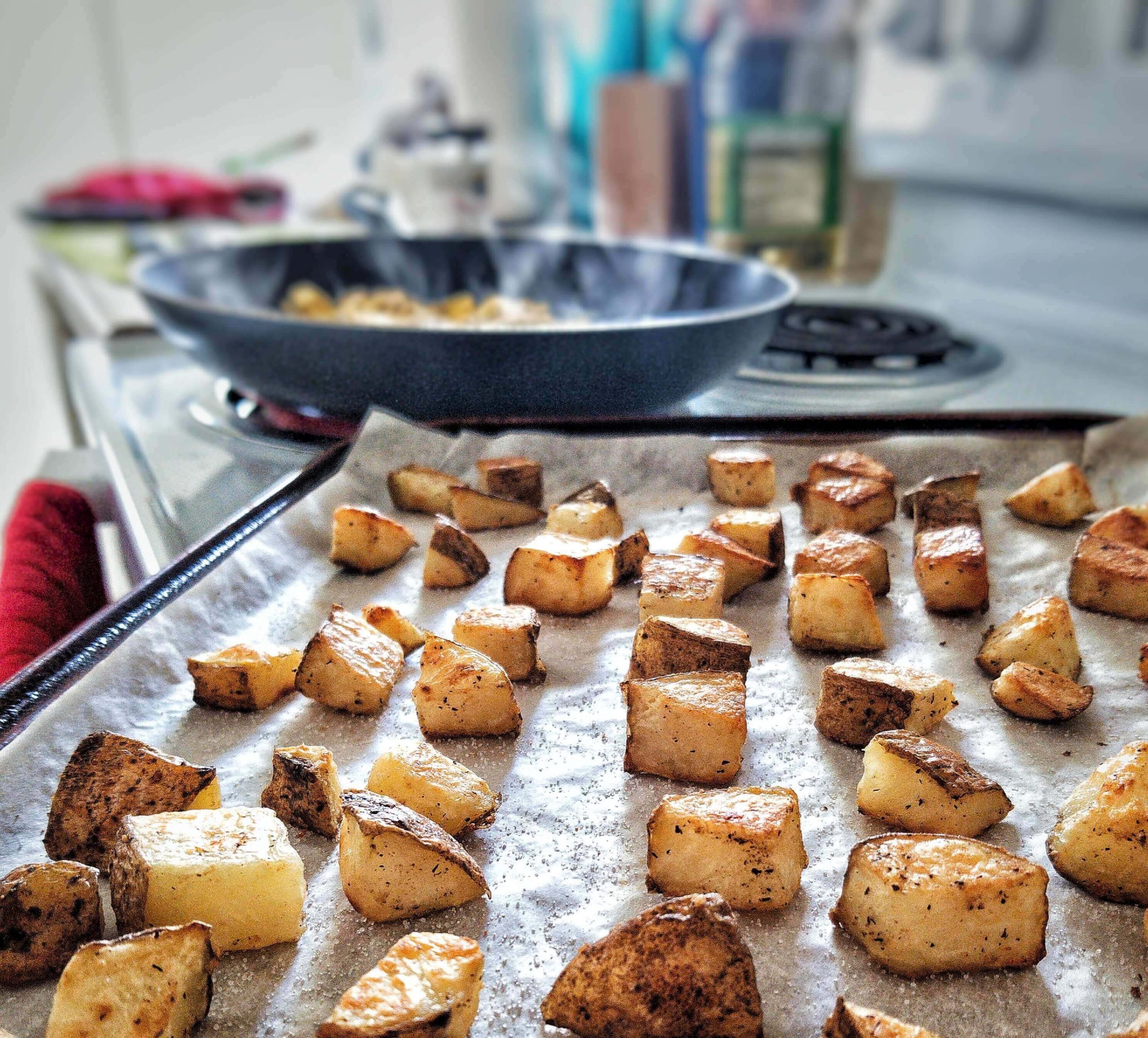Jump to:
Stop! Read this before you slide that wax paper into the oven.
Parchment paper and wax paper might look the same, but they can either make or break your food creations. There are some key differences to take note of.
So, what’s the difference between parchment paper and wax paper, anyway?
Let’s get down to the details of parchment paper vs wax paper.
What Is Parchment Paper Used For?
Parchment paper is typically made with a silicone coating, which makes it heat-resistant and nonstick. Because of this, parchment paper is great to use under heat applications, such as roasting.
Parchment paper can handle relatively high heat, around 425°f to 450°f, depending on the brand.
To find the highest-rated temperature for your parchment paper, take a peek at the cooking and use instructions indicated on the parchment paper’s packaging.
Usually, parchment paper can handle slightly higher heat than what’s indicated on the packaging. Used in higher temperature, the parchment paper may darken, but not burn.
Uses for parchment paper:
- Lining baking sheets for cookies, bread, and brownies
- To roast vegetables
- Use to catch oil drips in the oven
- To pipe melted chocolate
If you’re like me and love a good hack - it can also be used as a way to diffuse lighting in photo-taking, yielding a much softer light. If it can handle oven heat, it can handle lamp lights. Although, natural light will always be best for snapping a pic.
What Is Wax Paper Used For?
Wax paper is coated with wax. With keeping this in mind, the wax in the paper can melt and become a fire hazard if used in cooking, especially with high temperatures.
Learn from my mistake: you don’t need to experiment using wax paper in heat unless you want to scare the people who live with you and potentially burn the house down. It will get smoky in the kitchen.
Not only will you create a mess, but the wax paper will make whatever you’re cooking taste like crayons. That was not the kind of flavor I was going for.
Okay, so what is wax paper used for? It’s primarily used in non-cook applications. For example, kneading dough on a countertop or lining a cutting board to prevent a sticky mess. For easier and clean handling, use wax paper instead.
Uses for wax paper:
- Use as a surface for kneading dough
- Wrap food for cold storage
- Working with melted chocolate
- Cover countertops for an easier food prep cleanup
What Are The Similarities & Differences Between Wax and Parchment Paper?
Generally, parchment paper and wax paper can be used interchangeably, excluding heat applications. Parchment paper can be used in both cold and hot applications.
Wax paper can only be used in cold applications. It’s not built to be used with heat.
Similarities: Parchment paper and wax paper both contain non-stick properties and can resist moisture. They can be used interchangeably without the application of heat. This includes arts and crafts, no-bake desserts, as a surface for handling dough, or to protect your counters during food prep.
Differences: Parchment paper is coated with silicone and wax paper is coated with wax. Because of their differences in the coating, wax paper cannot withstand high heat. Cooking methods including toasting, roasting, broiling, is a no-go for wax paper. On the other hand, parchment paper performs well under heat.
Where To Buy Parchment Paper Or Wax Paper?
I can usually find both wax paper and parchment paper at the local dollar store. If you’re unable to find them at your dollar store, many grocery stores carry them and can be found in the baking section.
Amazon also sells parchment paper and wax paper online, but it might be cheaper to buy them at a store.
Parchment Paper Substitutes
If don’t have a roll of parchment paper handy for cooking, there are a few alternatives.
Spoiler alert: it doesn’t include wax paper. Here are some alternatives you can work with:
Aluminum foil: You can line oven-safe baking sheets and pans with foil instead. However, you will need to grease the top of the foil to prevent your food from sticking. You can either brush with oil or use a cooking spray. It doesn’t need much slick, a little bit of grease goes a long way.
Grease Baking Sheet/Pans: You can omit the foil and just grease up the oven-safe baking sheets or pans with oil/butter/grease. Apply the food directly and you can go your merry way with your cooking.
Silicone Baking Mats: This a great substitute, if you want to reduce waste and just have something that can be reused over and over again.
Recipes Using Parchment paper
Vegan Mushroom Bacon
Parchment paper is great for making plant-based mushroom bacon. It wicks away moisture and helps the slices become perfectly crispy.
Roasted Carrot Red Lentil Soup
A great base to any vegetable soup is using vegetables that have been enhanced in flavor via roasting. Parchment paper helps get the veggies tender, crispy, and flavorful - without sticking.
Crispy Roasted Potatoes
Want perfectly crispy roasted potatoes, without worrying about them sticking or falling apart? Parchment paper is the way to go.



Leave a Reply